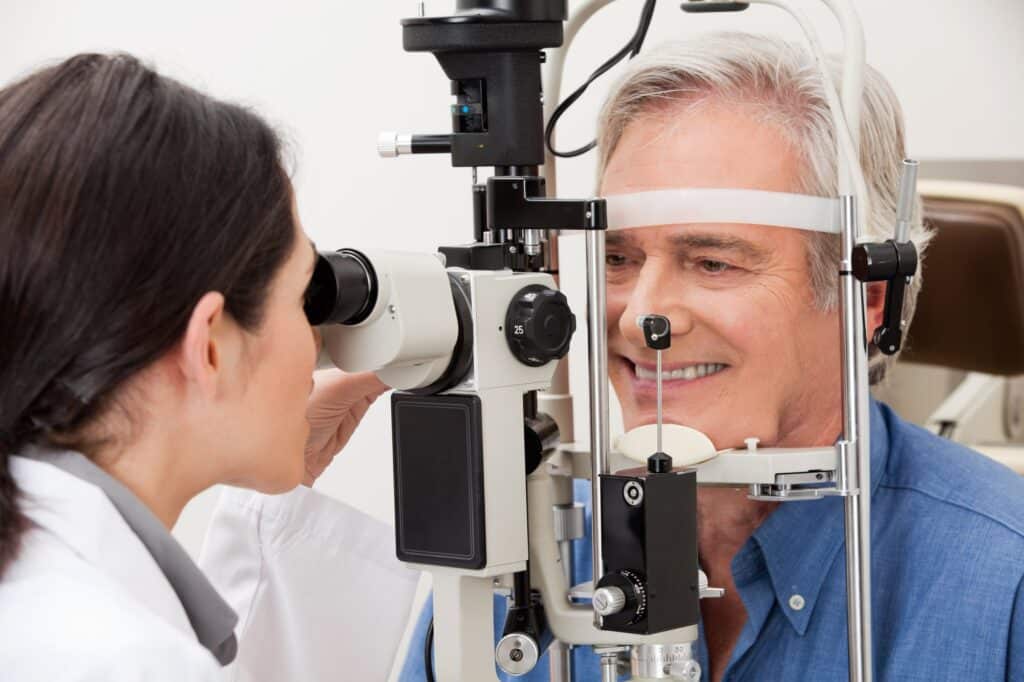With age comes wisdom but so do less than desirable changes to the body, including some affecting the eyes. Beginning around age 40, many adults begin to notice changes in their vision. While many of these changes are a normal part of the aging process, it is very important to be aware of them and understand when one could be a sign of a serious eye problem.
In this blog post, Dr. Linda Vu discusses common age-related vision changes and conditions and what can be done about them.
Presbyopia
As you get older, your eyes become less flexible, making it increasingly difficult for them to switch focus from far to near objects. This age-related loss of near vision is called presbyopia, and typically becomes noticeable around age 40. Traditionally, the condition has been treated with reading glasses, but advances in technology have made way for better alternatives. Monovision LASIK is one such option. In Monovision, one eye is treated to focus on far objects and the second eye is treated to focus on near objects. The two eyes then work together to see clearly at all distances.
Loss of Peripheral Vision
Loss of peripheral vision is another side effect of aging. The gradual loss of peripheral vision increases the risk of automobile accidents. Older drivers should take extra precaution when driving, including turning their head and looking both ways when crossing intersections.
Glare
Older adults are more likely to experience glare due to age-related changes in the eye’s lens. Increasing glare coming from car headlights at night or the sun’s rays reflecting off windshields can make driving difficult and dangerous. To reduce glare, your eye doctor may recommend eyeglasses with photochromic lenses with an anti-reflective coating.
Decreased Color Vision
As you age, the number of cells in the retina that are responsible for normal color vision decreases, causing colors to become duller and the contrast between different colors to become less noticeable. There is no treatment for this age-related loss of color vision, but it is important for you to be aware of this change, especially if your profession requires fine color perception (e.g., seamstress, artist or electrician).
Serious Age-Related Eye Diseases
Cataracts
Approximately half of adults age 65 or older have cataracts, which is the clouding of the eye’s natural lens. While prescription glasses and contact lenses can help minimize early symptoms, cataract surgery is the only way to remove them. During surgery, the cataract is replaced with an artificial intraocular lens to restore clear vision.
Age-related Macular Degeneration
Age-related macular degeneration (AMD) is the leading cause of blindness among American seniors. Characterized by the deterioration of the macula, AMD affects central vision and your ability to read, recognize faces, use the computer and other tasks that require you to see fine detail. While there is no cure for AMD, treatment with medications can slow down the progression of the disease.
Glaucoma
The risk of glaucoma increases with each decade after age 40. Glaucoma refers to a group of eye disorders that cause damage to the optic nerve that carries information from the eye to the brain. Often referred to as the “silent thief of sight,” glaucoma typically begins with little to no visual symptoms. There is no cure for glaucoma but treatment focuses on slowing down the progression of vision loss.
Linda Vision is committed to helping you enjoy healthy eyes and vision at age every age. To discuss your vision concerns and goals, please schedule a consultation with Dr. Vu. Contact our office by calling (626) 382-2020 or emailing us today.

